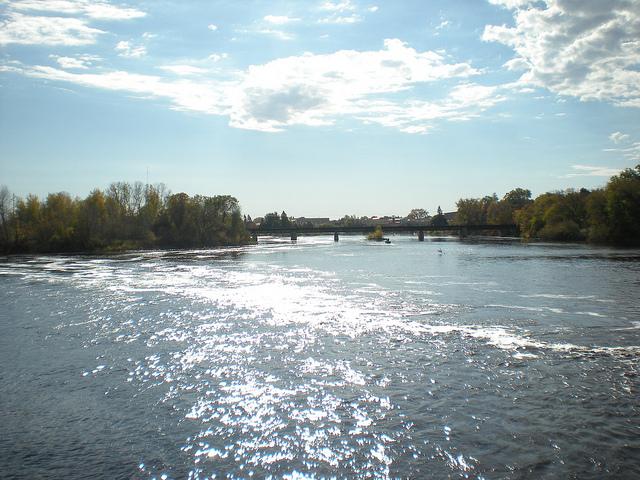Officials are monitoring Wisconsin’s rivers after this weekend’s heavy rainfall caused flooding throughout the state.
Steve Buan, senior hydrologist for the National Weather Service, said Wisconsin saw flooding from the Kickapoo River Valley to just north of Madison as well as near Sheboygan. Buan said while this flooding is not necessarily severe, it is still significant.
“What sets us up for flooding is that we get a fall that gets at least an average amount of moisture and then we get greater than average snow accumulation over the winter season. This is what we have this year,” Buan said. “Then, [for it to flood], you need a rapid snow melt or rain in the spring season. We’re seeing what we were expecting to see.”
Buan added with this much rain, soils are very saturated. In order to prevent further flooding, the state will need to see a few weeks of dry weather to reduce the risk that an additional rain this spring will bring flooding, Buan said.
The rivers in the southern half state will be at elevated levels for the next week to 10 days, he said. To prevent rivers from causing major flood damage, the weather will need to remain dry during that period and rain will need to only accumulate up to the average amount for this time of year.
Chris Clayton, water quality director at the River Alliance of Wisconsin, said although flooding is a normal process, people have magnified the issue by paving over land and draining wetlands for agricultural use.
The more land is paved, the less it can absorb rain or melting snow, thus causing moisture to run in to rivers and flood, he said.
“There’s probably more environmental damage causing flooding than flooding causes in agricultural damage,”Clatyon said.
Although it is difficult to predict long term weather patterns, Bob Manwell, public affairs manager for DNR’s South Central Region, said current flood conditions fall in the moderate range, said
For example, the DNR is monitoring Wisconsin River levees (artificial embankments used to hold back water) to ensure they continue to hold through spring. This will continue until the river drops below 17.4 feet, Manwell said.
Manwell said as water level rises, more areas are likely to flood.
“County government, all the local governments and the state government are watching this situation carefully,” Manwell said. “If we see signs that people might be endangered we’ll take appropriate action.”
[Photo by Flickr user USFWSmidwest]


